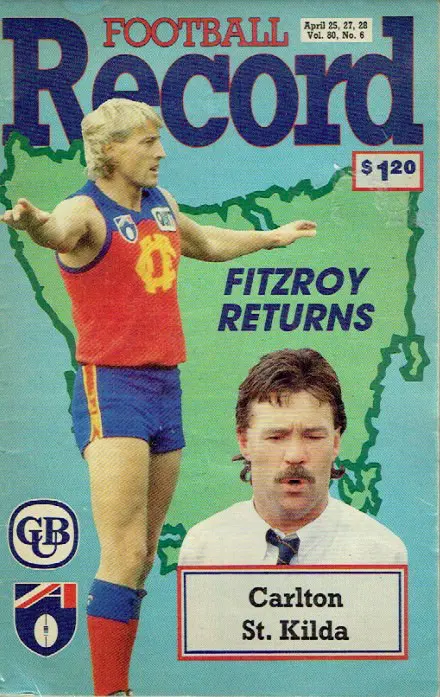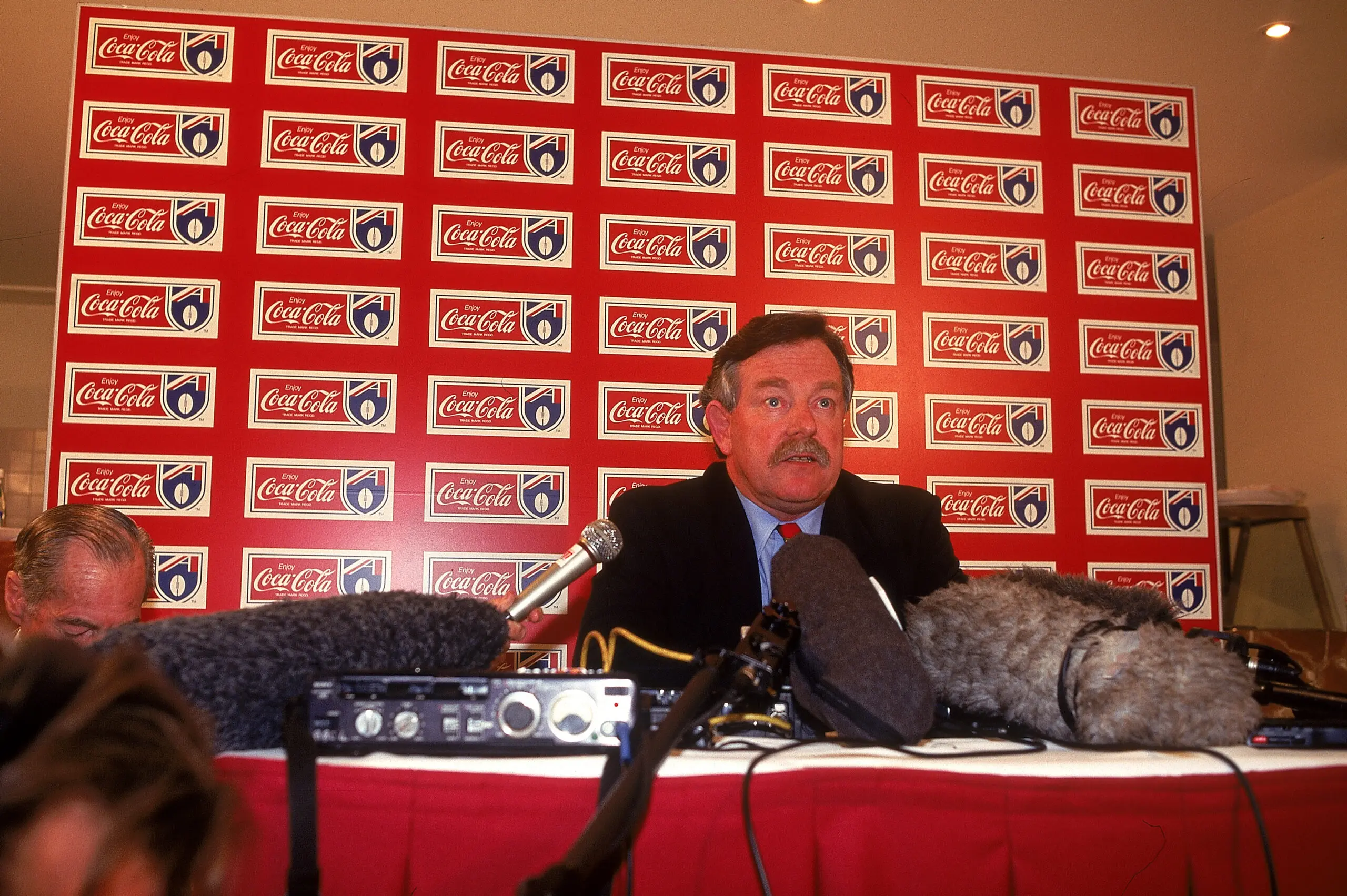Regrets are an inevitable part of life. They come with the territory of breathing and are a part of the unwritten deal we all sign for the right to exist.
Although some contrition can feel enormous – such as the misery born when a relationship breaks down or after committing a far more criminal act – others are forgotten in the blink of an eye.
In terms of the unpredictable game of football, there are a plethora of scenarios that have made or broken careers.
What if your side picked a different player from a certain draft?
What if your star spearhead had kicked straight when it mattered?
What if an island coated in bird poo had saved a former powerhouse?
Well, for fans of every creed we have sought to answer the question that has rankled you for years and kept you up at night for far too long.
We can't promise that we won't open old wounds, as let's face it, that is the entire point of the exercise.
From Adelaide to the Bulldogs, from Fitzroy to the Bears, here are every club's biggest 'what if' moments since the dawn of the AFL era in 1990.
OTHER WHAT IFS: Adelaide, Brisbane Bears, Brisbane Lions, Carlton, Collingwood, Essendon
Take it from us, this one goes to some odd areas.
What if Nauru never called in their loan?
Fitzroy?
Nauru?
We're sure we have vexed a few ‘zoomers' with these particular questions, but as far-fetched as it all sounds, the Oceanic microstate was a key player in the Lions' final pair of seasons in the mid-90s.
Despite the absurdity of these circumstances, for us to truly understand how an island covered in a thick layer of bird poo helped one of the league's foundation clubs almost stay afloat, we'll need to start at the beginning.
Prior to the 1995 AFL season, the cash-strapped Fitzroy Lions were like Mark Knopfler, in that they were in dire straits. Sorry, not sorry.
Following at least three failed mergers with Melbourne, St Kilda and Footscray respectively, a pair of thwarted interstate ventures to Tasmania and the ACT, and fleets of integral players having jumped from the sinking ship, Fitzroy was in desperate need of a saviour.

And in the early stages of 1995, this salvation looked likely to come in the form of the phosphate-rich and cashed-up Nauruans.
Later that same year, Nauru agreed to grant the Lions a seven-year loan, at the time worth over one million Australian dollars. In exchange, Nauruan politician Kinza Clodumar was granted a seat on the ailing club's board.
In an effort to generate funds to pay both the instalments to the island republic, as well as the interest on top of it, the eight-time VFL premiers constructed the ‘Fitzroy Foundation', creating ties with businesses in an effort to continue boosting their bottom line.
The major relationship forged from this collection of Lions supporters was between the Nauruans and Melbourne-based developers, Grocon – the company responsible for the construction of Crown casino.
Although this may sound like a daytime movie plot, things only became more abstract when the aforementioned pair shook hands and decided to redevelop the Carlton United Breweries site in neighbouring Abbotsford.
With the project looking likely to commence, Fitzroy, under the presidency of Dyson Hore-Lacy, sought to gain sponsorships from both Nauru and Grocon in deals that would be worth a combined $1m per year.
With the club's then sponsor - QUIT - having halved their financial commitment to the club that very year, any influx of funds would have been welcomed gleefully by Hore-Lacy's administration.
However, on the 28th of November 1995, the bird crap hit the fan when Clodumar's affiliates lost power in his homeland.
Following this political ousting, Nauru's new governors concluded that any projects in operation were to be halted, with audits into every single one of the island's offshore ventures to be conducted.
In the fallout from this change of tack, Nauru was granted legal advice that it would be improper to continue propping up an insolvent business such as the Lions.
Yet, Fitzroy quickly retorted that they were in fact solvent, and directors began paying players' wages from their own pocket to help keep the terms of the loan agreement viable.
Sadly, these windbacks meant that the once-proud club had to go cap in hand to Ross Oakley's AFL commission for one final handout, one reportedly worth $750K.
Oakley – by then fervently keen to merge underperforming teams in an effort to expand the competition – told the Lions that if this lump sum was not paid back in full by the completion of the year, then a league-appointed administrator would be put in place to run the club.
Due to this, Fitzroy opened talks with North Melbourne about the possibility of a merger.

Alright, let's come up for air for a minute, as I can hear you all asking, ‘What does this have to do with football?'
Well, with the discourse open between the Lions and Roos, the face of the current competition could have appeared completely different had the moneymen of a territory less than 22 square kilometres in size held off on asking for their money back.
In 1996, the league was offering a fund of $6 million to any teams that decided to align themselves for the start of the following season, and with both Fitzroy and North Melbourne then unlikely to ever be misconstrued for a pair of financial powerhouses, the pair decided to jump into bed together.
With this multi-million-dollar package in mind, the Victorian clubs set about settling the semantics of the deal. Initially, these talks went well, but when Nauru officially called in their debts, further faeces covered the rotating blades.
What ensued was a back-and-forth rally between Fitzroy and their would-be saviour that would have made Borg and McEnroe proud.
On June 26, 1996, Fitzroy tabled an offer of $550K plus a further two instalments of $100K in as many years to settle their $1.25 million debt to Nauru. But as the island nation deemed this short of requirements, the first offer was rejected, with Nauruan officials requiring an initial sum of $750K to be paid by the end of August that year, plus an additional three instalments of $100K down the track.
Despite this stance, the Nauru insurance company recanted 24 hours later, stating that the third of these aforementioned trio of instalments would only have to total $50K.
The next day, Fitzroy tabled their second offer of $550K by the completion of August, $150K the following year and $100,000 in 1998.
It was here that Nauru decided to appoint Michael Brennan – who reportedly arrived unannounced at the Fitzroy's pub headquarters – to act as the administrator tasked with recovering their debt.
At this stage, North Melbourne board member Peter De Rauch had become involved in proceedings and stated that if the proposed merger between the Lions and Roos was to take place, then the Arden Street club could not sign off on anything more than a single debt clearing payment of $550,000 AUD, a serious sticking point that would have future ramifications.
With this in mind, Fitzroy notified Nauru and Brennan that any funds owed beyond this proposed cut-off point would be underwritten by them and them alone.
By the start of July, talks between North and Fitzroy had begun to go south, as Hore-Lacy and the rest of the Lions board were told in no uncertain terms that they would not have a seat at the merged entity's table.
Only days later, Nauru finally agreed to close the debt once $550,000 was paid before the end of August of that year, a further $350,000 by the completion of October 1997 and the remainder of the million-dollar loan was cleared in annual instalments of $50,000 from 1998 onwards.
With this deal struck, Nauru's knife receded from the Roys' throat.
However, the league's dagger was still present, as was their question – who would the Lions merge with?
As their back was almost through the wall, Fitzroy had very little agency in this decision, and in a league that had developed into a rich business over the course of the previous decade, parties from right across the spectrum were more than keen to throw their two cents into the debate.
For the Lions' small, but loyal membership base, a merger with North Melbourne that allowed the club to remain in Victoria was seen as ideal - a view the club's board agreed with.
For the Roos, the same applied, as it would allow the then-on-field powerhouse access to further playing talent and an inflated salary cap for the 1997 season.
For the competition's other clubs, this idea of this ‘Super Team' with a list of around 50 players frightened them, and their collective preference was for the Lions and Brisbane Bears to wed.
This same sentiment was echoed by the league themselves.

These points of view all came to a head on July 4, 1996, when Fitzroy and North Melbourne agreed to join for the following season, with the league set to sign off on the deal the following morning.
However, in a last-ditch effort to sink the deal, representatives of the competition's other sides met and shot the proposal dead by voting for their preferred arranged marriage – a request that the league gleefully signed off on just after sundown.
Now, we all know that the Brisbane Lions went on to become one of the greatest teams in the history of Australian Rules Football, but if not for semantical bickering about colours, squad sizes and finances that could have been covered with the league's multi-million dollar merger grant, the lay of the land could have looked a hell of a lot different, with plenty of shed tears also spared.
During the 1996 season, Fitzroy - who was playing with the house's money – was reportedly in $4.5 million of debt, and had less than 8,000 paid-up members and would only win once for the year.
There is no doubt that with these factors in mind, and the league's boss circling them like a vulture, even the most eternal of optimists would have admitted that the AFL's centenary season was always going to be the Roys' last at the level.
However, had the landscape of Oceanic politics been a tad more stable, other clubs had been more accommodating, and a country that burnt through their funds like tailored cigarettes on a construction site had delayed reeling in their debts, then the North-Fitzroy Football Club could well be kicking goals in today's competition.






